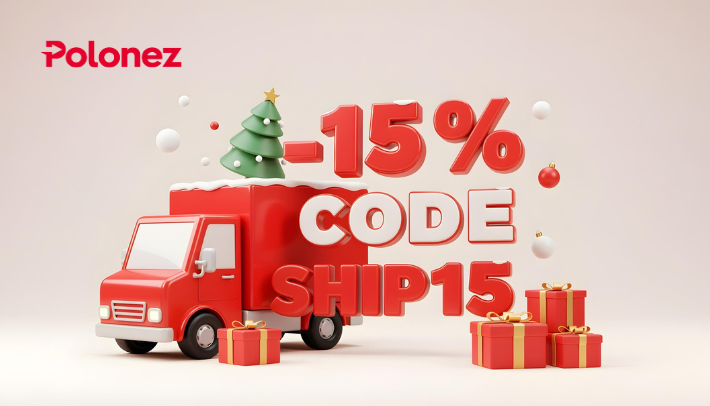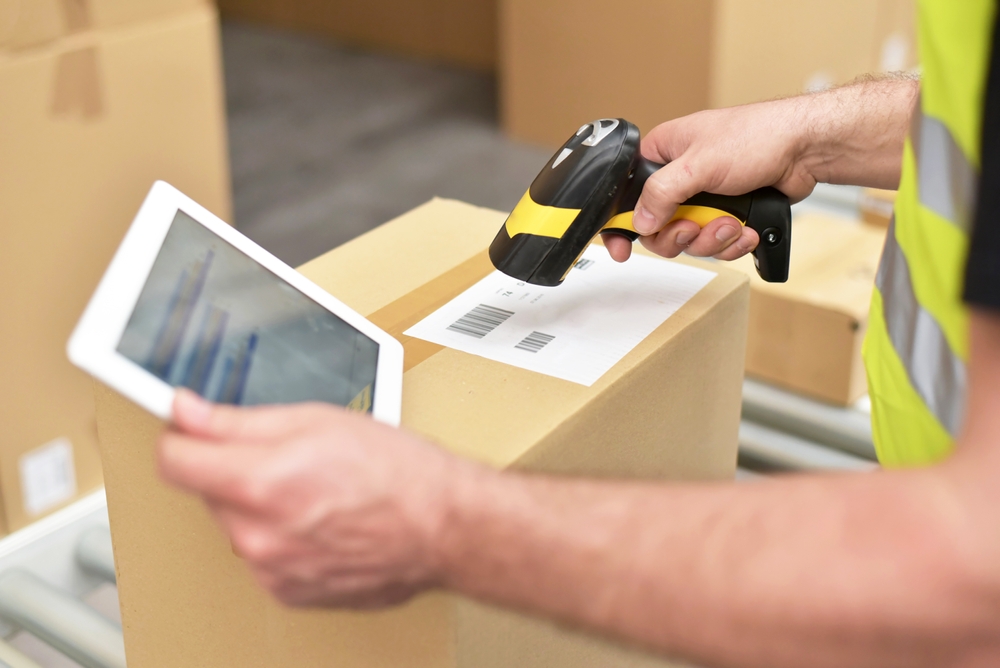Oct 27, 2025
Track a Shipment to Poland with Cutting-Edge Monitoring

When a piece of home is sent across the Atlantic, the very first step is learning how to track a shipment to Poland. Each parcel carries more than just things. It holds memories, love, and a little taste of America.
For people living in cities like Chicago, Detroit or New Jersey, these shipments feel like hugs sent across miles.
To track a shipment to Poland effectively, remember that tracking a package can sometimes feel oddly cold. You stare at numbers on a screen, constantly refreshing the page, hoping for a new update.
The Polonez tracking number works like a secret code, turning the journey of a simple box into something you can follow step by step. Each update paints a small part of the story, showing the package inching closer to homes in Kraków or Gdańsk.
As you watch the process unfold, hope replaces worry, confirming that soon, your gift will reach the people you miss most.
Track a Shipment to Poland: Why Trackers are Reliable Today
Before you can confidently track a shipment to Poland, you must acknowledge the painful history of trust and reliability built since the chaotic collapse of older consolidating shipping services from years and decades ago. Those collapses shook everyone’s confidence and left a mark.
Things shifted in the right direction years later for many of these shippers. When larger conglomerations stepped in, they bought out primary assets and formed new companies under their umbrella.
This move gave many operations a clean, fresh start without dragging any debts or old problems into the future. Money troubles and old contracts stayed behind, ensuring past issues wouldn't trip them up again.
With today’s technological and data support, consolidated shippers now have a steady base, ensuring you can reliably track a shipment to Poland running from their main hub in the United States. The previous chaos feels distant, as smooth operations give customers peace of mind that their deliveries are in safe hands again.
“The term Big Data has been gaining importance both at the academic and at the business level,” states Big Maritime Data: The promises and perils of the Automatic Identification System, a paper published by Linnaeus University. “Information technology plays a critical role in shipping since there is a high demand for fast transfer and communication between the parts of a shipping contract. The development of Automatic Identification System (AIS) is intended to improve maritime safety by tracking the vessels and exchange inter-ship information.”
Initiating the Journey from Warehouse Check-In
To track a shipment to Poland, know that the journey begins the moment workers gather and sort packages in the United States after you drop off your box at a Polonez outlet. The tracking page might show nothing for a short while, but this gap is no cause for concern, as real updates start once your box reaches the main hub in New Jersey and gets its first scan.
That moment launches the tracking number into action, showing either “Received at Facility” or “Processing.” Staff check the box, group it with others, and prepare everything for loading in containers.
Grouping lots of parcels keeps costs down, which helps big online shopping orders from the United States. While this process needs a brief quiet at first, your package soon joins the digital trail.
“In the latest ranking of its competitive position in the global market for the period 2016-2017, Poland ranked 36th in the world,” according to EconStor. “It should also be stressed that in this most recent world ranking Poland held the 16th position among EU Member States. A positive phenomenon in relation to Poland's foreign trade in 2016, as compared to previous years, was that the value of export exceeded import, which allowed for a turnover surplus of nearly EUR 4.8 billion, i.e. two times higher than in 2015.”
The article adds: “In 2016 (and also in the first half of 2017) there was a favorable diversification of Polish export, demonstrating an increase in export to non-EU markets of economically developed countries. After two years of relatively slow growth, export to this group of countries in 2016 increased by 5.6% (to EUR 12 billion), i.e. nearly 2.5 times faster than the total export.”
Clearance Approval and Tracking a Shipment to Poland
Getting the green light from U.S. export officials, which is important if you want to effectively track a shipment to Poland, demands careful paperwork. If shippers mess up here, shipments get held up fast, meaning the Digital Passport can't go anywhere without proper stamps.
Shippers need to get details right because European Union customs rules are strict and will block anything with unclear descriptions. Leaving out specifics isn’t just a small slip. It stops everything dead in its tracks, leaving tracking stuck at “On Hold for Documentation.”
Specifically, shippers must provide:
- A Commercial Invoice detailing the transaction (for sales).
- A Pro-Forma Invoice (for non-commercial gifts).
- Detailed product descriptions (vague entries like "gift" or "goods" are rejected).
Solid paperwork stops problems before they start. Many countries demand clear rules to stop fraud. These rules make sure banned goods don’t slip through unnoticed.
Only complete files move your shipment to “in transit.” Any mistakes can hold everything up.
|
Tracking Status |
Logistical Reality |
Technical Mechanism |
Statistical Duration (Economy Sea) |
|
"Parcel Not Found" / "Stuck in NJ" |
The package is pending consolidation at the New Jersey hub. Digital activation is awaiting container manifest finalization. |
Warehouse Management System (WMS) processing for LCL. Status remains sparse to manage logistics costs. |
0–14 Days |
|
"In Transit" / "En Route" (Long Gap) |
Package is physically loaded onto an ocean vessel, moving across the Atlantic. |
Vessel AIS data, but no container-level sensor tracking. Vague status obscures supply chain variability and congestion. |
40–60 Days (Core Transit) |
|
"Delivery Date Unknown" / "Delayed" |
Reflects external supply chain shocks: port congestion, labor shortages, adverse weather, or intermodal delays. |
Dependence on traditional, non-dynamic ETA systems, exacerbated by structural CEE corridor bottlenecks. |
Highly Variable (Abnormal beyond 71 days) |
‘In Transit’ and the Realities of Sea Freight
The moment tracking flips to “In Transit” when you track a shipment to Poland often triggers worry because updates stop and the package slips off the radar, locked in silence somewhere between continents, leading people to think their box has vanished.
Actually, this quiet spell is intentional, as carriers choose not to send small updates during the ocean part of the journey. Their main tracking systems can see the ship, but not your particular container.
If you track a shipment to Poland, cheaper shipping options don't get fancy sensors like expensive goods, and low-cost sea freight simply can't handle overhead that would double its price. Carriers cut out micro-tracking to avoid a mess of confusing data from changing weather or crowded ports.
In turn, the tracker won’t light up again until the package hits Europe. It helps to know how these shipments work: most packages land safely within 48 to 71 days, which is normal for this type of shipping.
Only if your package goes past 71 days does it make sense to get concerned. Until then, patience saves you a lot of stress.
This radio silence has a purpose, as it keeps shipping affordable for everyone, even though it can be unnerving. While surprises like blocked borders or slow ports can hit along the way, Polonez still sticks to their expected delivery window with support from their parent company Meest.
There's a steady hand at work even while your package sits quietly with its "In Transit" badge.
Customs and Regulations When You Track a Shipment to Poland
Once a package lands in Europe, usually at a busy port or train station, it runs straight into strict European Union rules, and Polish customs jump into action fast, which you'll see when you track a shipment to Poland.
The tracking updates with “Customs Clearance in Progress,” which often feels like the trickiest part of the journey. Poland follows the Union Customs Code, meaning every parcel gets hit with a 5 percent basic duty plus Poland's 23 percent VAT (Value Added Tax). Polonez links up with Karex in Częstochowa or sometimes POLSPED PACZKA in Warsaw to sort things out.
Sometimes, everything stalls waiting for proof of the parcel’s value, causing the tracking system to flash a scary “Customs Hold - Document Request,” and the recipient in Poland gets the call. Acting fast is important, as waiting even a day can kick off fresh delays.
Big changes might be coming in the future, as the European Union’s ViDA reform wipes out the easy IOSS option in July 2025. This will make some paperwork pile up for business-to-consumer shipments and potentially cause getting through Polish customs to take even longer.
“The desire for faster, more streamlined transactions, and tracking of shipments will likely increase as the shipping industry handles and transports increasing volumes and as customers demand better, more accurate, and timely information,” states Blockchain Technology and Maritime Shipping: An Exploration of Use Cases in the U.S. Maritime Transportation Sector, a research paper published by the U.S. Transportation Department's Maritime Administration.
The Final Sprint in Tracking
That last update brings real relief when you finally track a shipment to Poland successfully. You see "Out for Delivery" on the Polonez tracking page.
Suddenly, all the waiting feels worth it. Your package has made it through customs. Now it’s almost at the doorstep.
When you track a shipment to Poland, three big steps are accomplished — the U.S. export process is finished, the package survived its ocean trip, and Polish customs signed off on everything. This means it’s now in the local delivery network and should be at your door in a few days.
For most customers shipping household items, things look a bit different, as Polish customs will ask for a big security deposit up front before releasing the parcel.
To avoid delays and keep things smooth, Polonez suggests sticking with their Two-Point Rule before reaching out for help:
- Contact Immediately: If the Polish recipient or an official intermediary specifically requests documentation. This corresponds to the "Customs Hold - Document Request" status and requires swift input.
- Contact Only: If the status has stalled for an unreasonably long time after customs clearance, or if the sea freight package has definitively exceeded the statistical maximum delivery timeframe of 71 days.
The Polonez tracker acts like a watchful friend. It stays quiet while packages cross the ocean. Once Customs Hold appears, it jumps into action.
No need to refresh the page a hundred times. Knowing how it works brings peace of mind, as each step keeps your package safe until it lands in your hands.
Polonez America
Polonez America specializes in international shipments from the United States to 43 European countries and specifically helps customers track a shipment to Poland. We offer parcel shipment via ocean or air, vehicle shipment, commercial LCL (Less than Container Load) and FCL (Full Container Load) shipping.
Our comprehensive range of services means customers can initiate package or commercial shipments from any of Polonez's authorized shipping outlets within the United States, which are then transported to our headquarters for sorting. Customers can send packages from authorized shipping outlets in the United States or by sending them via UPS, FedEx, or U.S. Postal Service to Polonez America's headquarters in Port Reading, NJ.
Polonez America is your expert in the resettlement process, collaborating with European partners for parcel services, customs, and delivery within Poland and other countries. We earn client trust through integrity and professionalism by delivering the highest quality service at the most competitive price.
Recommended to you

News
Dec 2, 2025
Don’t Miss Christmas Delivery!
CHRISTMAS IS JUST AROUND THE CORNER. There’s still time to send your holiday parcels to Poland — but the shipping deadlines are approaching quickly!

News
Dec 1, 2025
15% OFF Online Shipments
December Holiday Promo

News
Nov 24, 2025
How the Middle Warehouse Ensures Quick Delivery to Poland
U.S. online shops are reaching more buyers in Europe every year thanks to quick delivery to Poland and other countries.




